Pre-Application Consultation (PAC)
Page updated on: 28/03/2025
There is a requirement for applicants to submit a pre-application consultation report for all outline or full applications for ‘major’ proposals. ‘Major’ development is defined in article 2 of the Town and Country Planning (Development Management Procedure) (Wales) Order 2012. This applies to any of the following:
- the winning and working of minerals or the use of land for mineral-working deposits
- waste development
- residential developments of 10 or more dwellings or where the site has an area of 0.5 hectares or more (if the number of dwellings is not known)
- the provision of a building or buildings where the floorspace to be created is 1,000 square metres
- development carried out on a site having an area of 1 hectare or more
- The requirement does not apply to proposed applications under section 73 or 73a of the Town and Country Planning Act 1990, reserved matters, or under section 96a (non-material amendments).
The requirement to undertake pre-application consultation and to submit a PAC report with a formal planning application is a requirement of the Planning (Wales) Act 2015.
Effective consultation:
- Provides the applicant with an opportunity to improve their planning application prior to submitting
- Can assist the proposal to be accepted by the consultees of the process, including the local community
- Can help avoid unnecessary costs and delays by ensuring that all relevant issues are addressed at the earliest stage
Prior to undertaking Pre-Application Consultation, it is recommended that you contact us. We offer a pre-application service. We can advise on the following matters:
- Which documents and information will be required as part of the planning application and which documents should be consulted upon;
- Which additional consultees could offer a valuable contribution to the consultation in addition to the statutory consultees listed in the Order. These may include other sections of the council whose remit relate to matters such as ecology, public protection, planning policy, parks and open space provision for example.
We would also recommend that you consider the following points of good practice outlined in the Welsh Government’s Pre-application Community Consultation: Best Practice Guidance for Developers. This allows you to take full advantage of the benefits of the pre-application consultation and for communities and statutory consultees can more readily influence the development proposals.
Applicants should bear in mind the benefits of maximising publicity at pre-application stage and in doing so should consider going beyond the requirements of the Order. Some examples include:
- Holding consultation events such as public exhibitions, drop-in events, presentations and workshops. Events should be held in accessible locations and inclusive premises in order to enable the highest possible attendance by people who would be affected and could make valuable contribution to the consultation
- Displaying more than one site notice where appropriate and displaying them widely. It is considered good practice for developers to place site notices at each existing and proposed access point into the application site and at least one notice along each boundary which adjoins or is adjacent to a public footpath or highway
- Extending the 28-day consultation period
- Ensure that the consultation documents are readily available within normal working hours. In instances where documents are placed in a building which has limited opening hours then it is considered good practice to ensure that the documents are also placed in a second location which is open to the public during normal working hours. Our larger libraries can be used for this purpose.
- Extending the consultation area, particularly in respect of larger sites
- The use of materials such as leaflets, flyers and community newsletters
- The use of social media such as Twitter and Facebook
- Proactive Media Relations Briefing & Press Releases
- The use of formal letters
- Engage in discussions with representatives of the community such as the Local Members and Town and Community Councils on matters relating to the proposal including any potential planning obligations
- Undertake additional non-statutory consultation before the pre-application consultation
- Provide non-technical summaries of technical documents (in both English and Welsh)
- Drawings and plans need to be presented in a format which is easily understood
- The draft planning application documents should be made available for consultation. Whilst it is acknowledged that these are draft documents, you should ensure that the documents and information provided give enough information for consultees to provide a well-informed response. If insufficient information is provided for the purposes of the PAC then it is likely that the PAC Report will not be validated and the applicant will be required to undertake the PAC exercise again in compliance with the guidance.
43.9% of Carmarthenshire’s population are Welsh speakers compared to the Welsh average of 20%. It is important that consultation is undertaken bilingually so that consultees are provided the opportunity to engage in either both Welsh and English. Developers should:
- Publish all notices and correspondence in both Welsh and English. Template forms are available in Schedule 1B of the Order
- Produce as much publicity and consultation documentation as practicably possible in both Welsh and English
- Invite consultation responses in both Welsh and English
- At consultation events, have Welsh speakers present to discuss with consultees who would prefer to communicate in Welsh
Reasonable efforts should be made to reach consensus. The Report should make it clear and specific how far the involvement has resulted in agreement to adopt or to alter proposals. Where agreement has not been possible the reasons and the scale of disagreement should be made clear.
The Report should be comprehensive and outline information clearly. Make the report available on the consultation website as soon as practicably possible after the consultation. Feedback should be provided to the community on the changes made to the application as a result of the pre-application consultation.
You should be mindful that the PAC report will be made publicly available as part of the planning application on our website. You should therefore be mindful of data protection when referencing consultation responses and the details of the consultees.
Providing a PAC report is a validation requirement and if the PAC guidance has not been adhered to then the applicant will be required to undertake the PAC exercise again in compliance with the guidance.
Planning
Planning Application Guide
Welcome to the Planning Hwb
Major Planning Applications
Extending / changing your home
- Lawful Development Certificate
- Pre-application advice service
- Householder planning permission
- Neighbouring properties / party walls
- Bats and nesting birds
- Conservation areas
- Listed buildings


